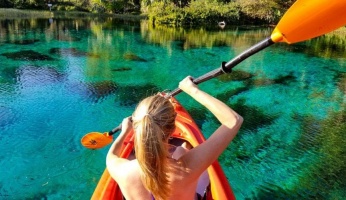All You Need to Know About Hiking the West Coast Trail
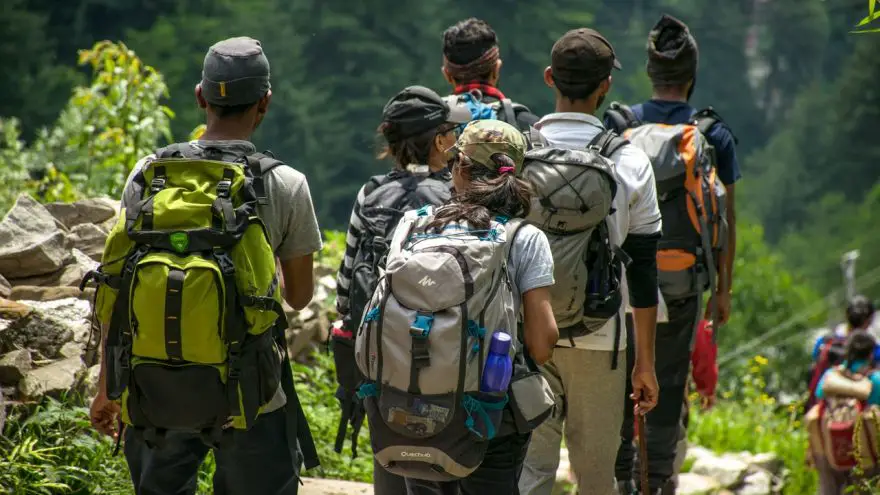 All You Need to Know About Hiking the West Coast Trail
thegearhunt.com
All You Need to Know About Hiking the West Coast Trail
thegearhunt.com
Everyone agrees that when you want an incredible hike, you need to hike the West Coast Trail. It is amazing. From the jaw-dropping views to the incredibly enormous trees, you will never be lacking for sights. It is very tough too. In fact, some say that it shouldn’t exist at all. Hiking trails tend to form from the easiest route that is worn down through the years and heading to some sort of destination that is worthwhile. This trail evolved from the necessity of getting survivors from shipwrecks out of isolation and back to the settled territory.
This trail was born of necessity and today the route is the only one that is possible over terrain that changes brutally and along the tangle of a rainforest. It is flanked by cliffs on one of its sides and an area is known as the “Graveyard of the Pacific” on its other side. This is a trail that evolved right where it shouldn’t have. Seriously, what kind of people would plow a hiking trail through wilderness that is impenetrable unless they were absolutely forced to do so?
Along this trail, conditions are always wet, and always heading either up or down. There are a lot of ladders and hundreds of fallen trees, canyons, creeks, and rivers. Even with the construction of things like ladders, cable car crossings, and suspension bridges, it is still a brutal trail. Also, every year, winter storms knock massive trees over and they lay sprawling right on the trail.
Length & Difficulty
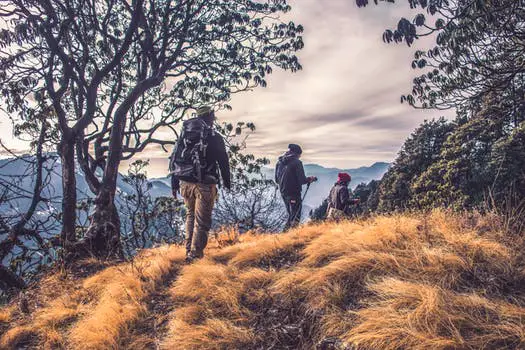 The difficulty of this trail can be seen by the knowledge that it is relatively short at only 75 km, but it can take as much as a week to complete. This is for a couple of reasons. First of all, the length of the trail is a bit misleading because it doesn’t account for all of the zigs and zags along the way. These are both from side to side and up and down. This is sort of a jigsaw trail that goes up and down over countless chasms and tangled with quite a bit of rainforest along the way. Also, does that distance include or account for all of the 50’’ ladders? It takes a truly long time to snake through it and you will come to find that where the map says you have gone 2km, your pedometer will tell you that you have traveled 4.8km!
The difficulty of this trail can be seen by the knowledge that it is relatively short at only 75 km, but it can take as much as a week to complete. This is for a couple of reasons. First of all, the length of the trail is a bit misleading because it doesn’t account for all of the zigs and zags along the way. These are both from side to side and up and down. This is sort of a jigsaw trail that goes up and down over countless chasms and tangled with quite a bit of rainforest along the way. Also, does that distance include or account for all of the 50’’ ladders? It takes a truly long time to snake through it and you will come to find that where the map says you have gone 2km, your pedometer will tell you that you have traveled 4.8km!
Add to that the fact that you will be bogged down at times by mud, crawling over and under trees that have fallen, and halting approximately every 5 or 10 minutes to take in a spectacular view.
Even sections of this trail that are wrecked become things that will amuse and awe you. You might be strolling along a lovely, ancient wooden boardwalk only to be stopped when you realize that a good part of it is missing in the middle. You can stand at the edge of it and peer down into a pool of mud that is quite deep and on the other side is an impenetrable jungle. Then, you see it. On each side of the gap is an end of a massive tree that fell through the boardwalk during a winter storm untold ages ago. You will be able to tell that it has been quite a while due to the weathering of the tree as well as the waterlogged pieces that are disintegrating. This tree is so massive that it just sprang up when it was cut, and the ends have been levered up to normal eye level. So, why hasn’t the boardwalk been fixed? This thought will cross your mind more than once until you come across the same situation a few more times on the trail and it hits you that these things happen often and repairing all of the damage will take a lot of costly work. If you were to keep the West Coast Trail in good repair, you might need an army of workers. This just isn’t realistic, and you might slowly begin to realize that the hike is more interesting and colorful with smashed areas and the constant reminders that the weather of the west coast of Vancouver Island can be destructive and wild.
The Beauty
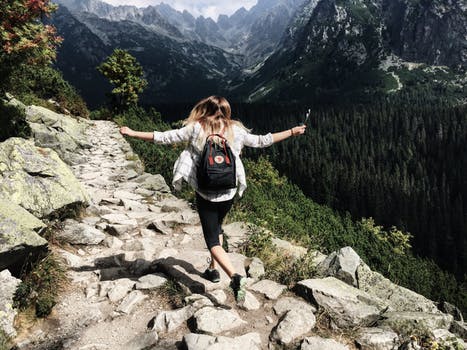 You might be on this trail for a few days before you can finally wrap your mind around just how wonderful it really is. Its wild beauty is a phenomenon that it is just alive with. Every time you look up it has changed. Every single place you look you will see a work of art that might be in the form of a tree splayed across the valley of a river, or a gap in the rain forest that reveals the ocean 1,000’’ below it. You might view a swirling mass of white and green that is swirling foam that has been churned up by those gorgeous waves crashing in the Pacific. The terrain is constantly changing and the obstacles and endless views by themselves could be enough to qualify this hike as the best in the world, but there is yet another aspect of it that combines with its beauty, and this is what essentially makes it what it really is. That is the extreme difficulty of the trail.
You might be on this trail for a few days before you can finally wrap your mind around just how wonderful it really is. Its wild beauty is a phenomenon that it is just alive with. Every time you look up it has changed. Every single place you look you will see a work of art that might be in the form of a tree splayed across the valley of a river, or a gap in the rain forest that reveals the ocean 1,000’’ below it. You might view a swirling mass of white and green that is swirling foam that has been churned up by those gorgeous waves crashing in the Pacific. The terrain is constantly changing and the obstacles and endless views by themselves could be enough to qualify this hike as the best in the world, but there is yet another aspect of it that combines with its beauty, and this is what essentially makes it what it really is. That is the extreme difficulty of the trail.
As gorgeous as this trail is, it is also brutal. It rains most of the time, so if you are planning to hike this trail, expect to be wet. This can make people crabby and soggy, exhausted, and just plain miserable. The trail is often treacherous too, as it can be slippery and muddy. Your entire attention needs to be on every step you take. This will sort of mesmerize people who hike it. You will be completely focused on every step and your mind will relax into an almost meditative state.
That is when it happens.
You take a second to look up and get a glimpse of what is surrounding you and realize it is spectacular. This trail is the ideal combination of difficulty that is brutal, natural beauty that is stunning, and wilderness that is incomparable. Add to that the fact that you will occasionally catch a glimpse of history that will take you centuries back in time, and you have a once in a lifetime experience.
As far as history and time travel go, you might see a part of a shipwreck on the beach or massive anchors left there from 150 years ago once the ship it was attached to fell prey to the Graveyard of the Pacific. Calamitous storms claimed hundreds of ships and thousands of lives here.
Dominion Life Saving Trail
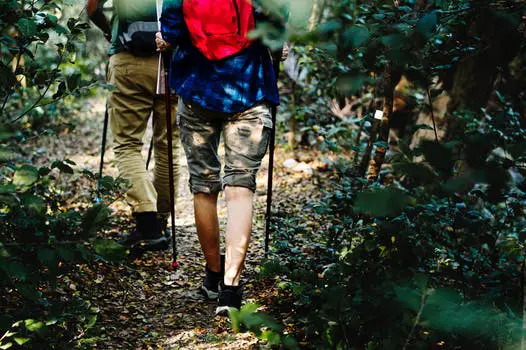 This trail was originally named the Dominion Life Saving Trail and in essence, was built from pure necessity. This was due to the massive number of shipwrecks that this area of the Pacific was named for. There were nearly 500 shipwrecks, and this trail was created to allow the survivors from those shipwrecks to walk to Victoria where rescuers would be able to help them.
This trail was originally named the Dominion Life Saving Trail and in essence, was built from pure necessity. This was due to the massive number of shipwrecks that this area of the Pacific was named for. There were nearly 500 shipwrecks, and this trail was created to allow the survivors from those shipwrecks to walk to Victoria where rescuers would be able to help them.
Inevitably, it finally became what it is today – the site of recreational hikes. Its difficulty, which at one time was its worst feature, is now a cherished defining trait. It is found inside the Pacific Rim National Park Reserve, and this Reserve protects and represents 3 coastal lowland beautiful forests. These are the West Coast Trail, Broken Group Islands, and Long Beach.
A Bit of History
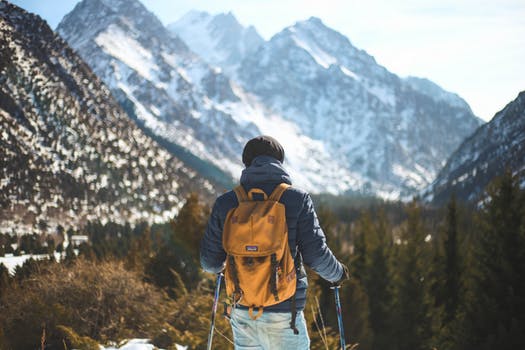 Back in the 1800s, shipping into and out of the Juan de Fuca Strait was rapidly increasing. During this time, quite a few ships were lost. There is more than 1 reason for this. First of all, the west side of Vancouver Island is what is known as a lee shore. This means that any ships will drift rapidly towards the rocky coast of the island and away from the Strait, where it should be heading. Essentially, if the weather was stormy enough to obscure the landmarks, there was a dearth of wind, or if the engines failed, the ships would get closer and closer to the dangerous coast. There is also a second, more obvious reason. Especially to anyone who might have encountered the brutal West Coast winters. The storms here can be so bad that the West Coast Trail is totally closed from the month of September all the way until May. This isn’t because of any sort of bureaucratic worry about safety either. It is simply too stormy. The wind, rain, and the awful mud that can bog you down even in the summer can become unbearable in the winter.
Back in the 1800s, shipping into and out of the Juan de Fuca Strait was rapidly increasing. During this time, quite a few ships were lost. There is more than 1 reason for this. First of all, the west side of Vancouver Island is what is known as a lee shore. This means that any ships will drift rapidly towards the rocky coast of the island and away from the Strait, where it should be heading. Essentially, if the weather was stormy enough to obscure the landmarks, there was a dearth of wind, or if the engines failed, the ships would get closer and closer to the dangerous coast. There is also a second, more obvious reason. Especially to anyone who might have encountered the brutal West Coast winters. The storms here can be so bad that the West Coast Trail is totally closed from the month of September all the way until May. This isn’t because of any sort of bureaucratic worry about safety either. It is simply too stormy. The wind, rain, and the awful mud that can bog you down even in the summer can become unbearable in the winter.
There is also another reason. This one is malicious, sinister, and much less obvious. It is the current. The current off this coast moves to the North and when the weather is stormy, it does so with speed. It is so fast that it has been known to completely throw off navigation. So, pretend that you are captaining a ship in a bad storm and are getting near the Juan de Fuca Strait. You would be in the year 1906 and have the same navigational aids and maps as would any captain of that era. You find yourself far off course and unfamiliar with the coastline. You are expecting to see the sheltering, calm waters of the Strait, but instead, are faced with the jagged rocks of Vancouver Island just a split second before they tear into your ship. You are quite a few miles north of where you thought you might be. For the next couple of hours, your ship will take a pounding that will tear it to pieces from the rocks and waves.
Now, more than a century later, you can walk along the beach and come across an anchor. It belonged to the Skagit, which was disintegrated back in 1906. This is yet another reason this trail is so outstanding.
Yes, it is challenging, brutally so, it is also dramatically different and wild at each turn. However, the fact that you will stumble across historical artifacts just laying right out on the beach is something you won’t get with any other trail. You can sit next to it and marvel at the rusting, huge mass and think about the ship itself, which is just a little way away and hidden underneath the crashing waves on another beach on the trail.
Dangers
 It might be an easy thing to just gloss over all of the dangers inherent with this trail and focus on the positive parts of it, but that wouldn’t be fair to you, the reader. Despite the hiking season being a scant 4 ½ months, there are still a consistent 300+ injuries on a yearly basis. Those injuries might be minor ones where the hikers manage to carry on with no assistance to more serious ones that require emergency evacuations. The number of emergency evacuations fall between 80 and 100 each season. They can be the result of quite a few things that can include rushing through the hike, hiking too late or too far, and more. Groups need to be ready for the variations in distance and speed, and even endurance within their groups and attempt to keep the distance and speed within a comfortable range for everyone involved. Basically, you need to allow yourself 1.enough time, be vigilant, and take a lot of breaks.
It might be an easy thing to just gloss over all of the dangers inherent with this trail and focus on the positive parts of it, but that wouldn’t be fair to you, the reader. Despite the hiking season being a scant 4 ½ months, there are still a consistent 300+ injuries on a yearly basis. Those injuries might be minor ones where the hikers manage to carry on with no assistance to more serious ones that require emergency evacuations. The number of emergency evacuations fall between 80 and 100 each season. They can be the result of quite a few things that can include rushing through the hike, hiking too late or too far, and more. Groups need to be ready for the variations in distance and speed, and even endurance within their groups and attempt to keep the distance and speed within a comfortable range for everyone involved. Basically, you need to allow yourself 1.enough time, be vigilant, and take a lot of breaks.
Things that can contribute to accidents and injuries might include the frequent rainy weather that makes the rainforest damp, slippery boardwalks and ladders, and more. Things like this contribute to broken ribs, arms, and wrists. People also tend to want to walk on the rocks, which are slippery, and this is also dangerous.
Rain can also leave wet people open to the chances of hypothermia. It isn’t an unusual thing to see hikers wearing jeans because of this. You will need a jacket, waterproof pants, gaiters, and hiking shoes that are cut high. These are just a few of the dangers involved with hiking the West Coast Trail. There are also bobcats, snakes, and other wild critters to worry about, and the cable cars have been known to be the source of injuries too.
In short, this trail is dangerous and brutal, but it is also a one of a kind, spectacularly beautiful one that should be on every hiker’s bucket list.
Sources
- YouTube, West Coast Trail – The Best Hike in the World – Full Documentary
- Best Hike, West Coast Trail
- Parks Canada, West Coast Trail: Hike of a Lifetime
- The West Coast Trail, Your Adventure







